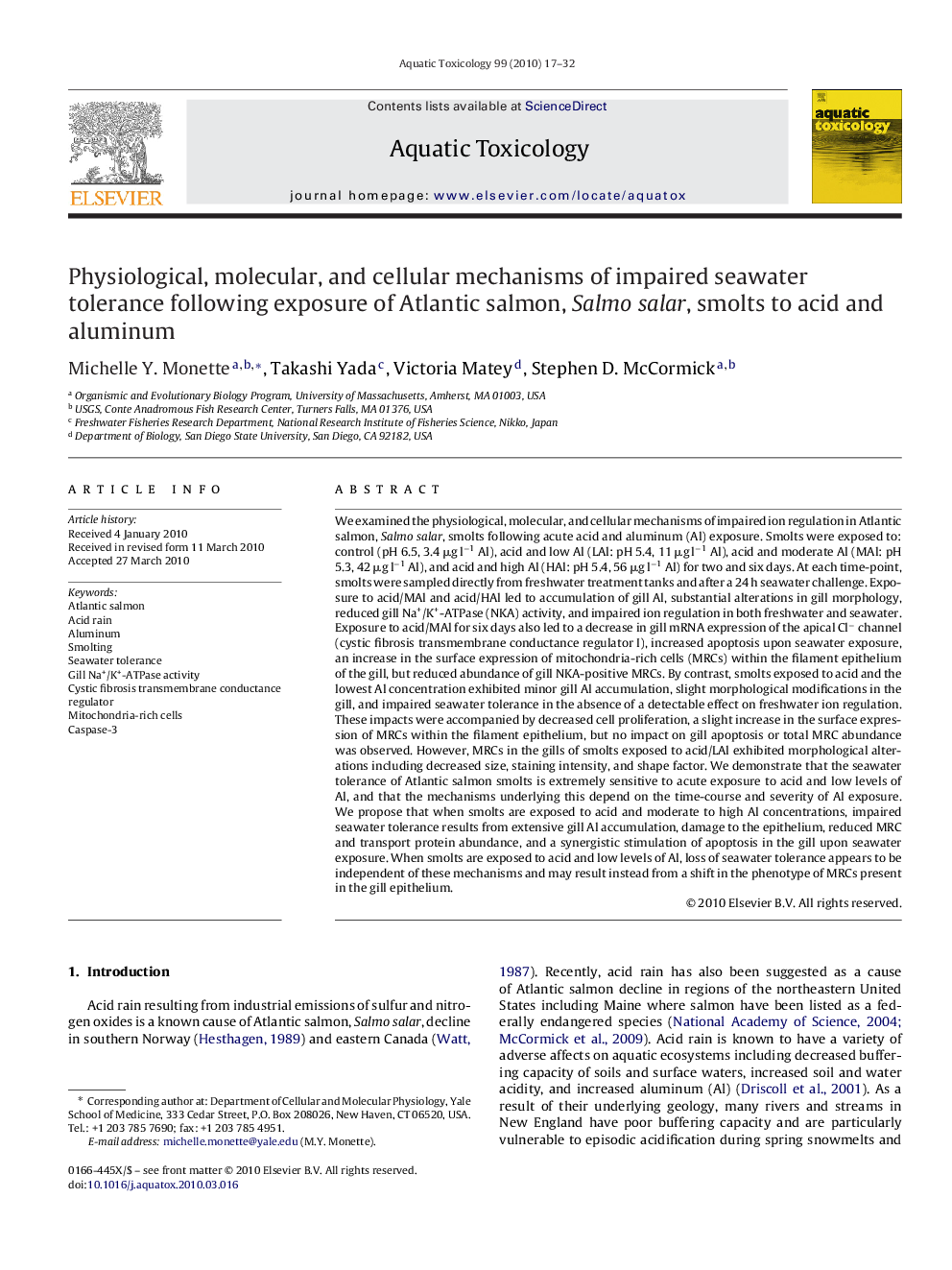| Article ID | Journal | Published Year | Pages | File Type |
|---|---|---|---|---|
| 4530228 | Aquatic Toxicology | 2010 | 16 Pages |
We examined the physiological, molecular, and cellular mechanisms of impaired ion regulation in Atlantic salmon, Salmo salar, smolts following acute acid and aluminum (Al) exposure. Smolts were exposed to: control (pH 6.5, 3.4 μg l−1 Al), acid and low Al (LAl: pH 5.4, 11 μg l−1 Al), acid and moderate Al (MAl: pH 5.3, 42 μg l−1 Al), and acid and high Al (HAl: pH 5.4, 56 μg l−1 Al) for two and six days. At each time-point, smolts were sampled directly from freshwater treatment tanks and after a 24 h seawater challenge. Exposure to acid/MAl and acid/HAl led to accumulation of gill Al, substantial alterations in gill morphology, reduced gill Na+/K+-ATPase (NKA) activity, and impaired ion regulation in both freshwater and seawater. Exposure to acid/MAl for six days also led to a decrease in gill mRNA expression of the apical Cl− channel (cystic fibrosis transmembrane conductance regulator I), increased apoptosis upon seawater exposure, an increase in the surface expression of mitochondria-rich cells (MRCs) within the filament epithelium of the gill, but reduced abundance of gill NKA-positive MRCs. By contrast, smolts exposed to acid and the lowest Al concentration exhibited minor gill Al accumulation, slight morphological modifications in the gill, and impaired seawater tolerance in the absence of a detectable effect on freshwater ion regulation. These impacts were accompanied by decreased cell proliferation, a slight increase in the surface expression of MRCs within the filament epithelium, but no impact on gill apoptosis or total MRC abundance was observed. However, MRCs in the gills of smolts exposed to acid/LAl exhibited morphological alterations including decreased size, staining intensity, and shape factor. We demonstrate that the seawater tolerance of Atlantic salmon smolts is extremely sensitive to acute exposure to acid and low levels of Al, and that the mechanisms underlying this depend on the time-course and severity of Al exposure. We propose that when smolts are exposed to acid and moderate to high Al concentrations, impaired seawater tolerance results from extensive gill Al accumulation, damage to the epithelium, reduced MRC and transport protein abundance, and a synergistic stimulation of apoptosis in the gill upon seawater exposure. When smolts are exposed to acid and low levels of Al, loss of seawater tolerance appears to be independent of these mechanisms and may result instead from a shift in the phenotype of MRCs present in the gill epithelium.
